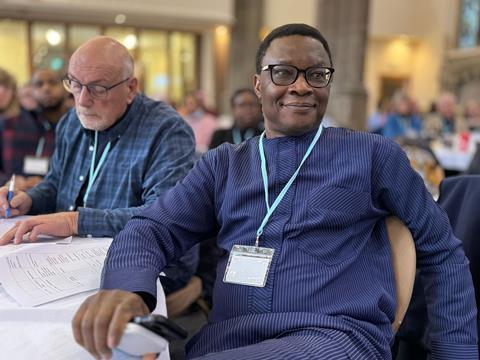150 Christian leaders gathered at Gateway Church in Leeds last month for a one day conference to explore how to better build intercultural churches. Rev Osoba Otaigbe, who instigated the event, shares some of the group’s findings

A few weeks ago I hosted a gathering on intercultural church in Leeds with over 150 Christian leaders.
The terms “multicultural church” and “intercultural church” are often used synonymously, but they are different. A multicultural church may allow cultures to coexist, but an intercultural church goes a step further in promoting meaningful interaction and understanding between individuals from diverse backgrounds.
The event in Leeds showcased how building an intercultural church is possible. We deliberately incorporated different languages in worship, for example. Our vision of an intercultural church is based on Revelation 7:9, where people from various backgrounds will one day come together to worship in harmony.
Although building intercultural churches will not be easy, it is our calling, especially as our nation becomes more diverse. We need a Church that will play a reconciliatory role. I believe this will serve as a powerful testament to our faith and will inspire many people to desire what we have.
Although building intercultural churches will not be easy, it is our calling
On the day, we asked participants to discuss “Why most churches and unity movements are not actively engaging in intercultural church and mission despite the biblical teachings advocating for it?”
Here’s some of the feedback our discussion generated:
Without a vision for cultural diversity, church unity falters. Rediscovering our place in God’s family, valuing cultural diversity, and embracing biblical teachings fosters inclusion and understanding. Church leaders and members need to actively engage with diverse cultures, breaking barriers to create a community reflecting God’s love and unity.
Language barriers pose challenges for diverse communities, but with patience and respect, they can be overcome. Incorporating translations in worship fosters inclusivity, as seen in our Leeds gathering where diverse bands facilitated united worship in various languages.
In a diverse church, cultural differences extend beyond visible aspects like singing and dressing to include invisible ones like time management and communication styles. Understanding and navigating these differences requires patience, open-mindedness, and cultural intelligence. Creating an inclusive environment involves promoting, cultural awareness, and collaboration to embrace the richness of cultural diversity.
Fear and ignorance can hinder meaningful interactions and foster barriers. Prejudice and bias lead to discrimination and exclusion. However, intercultural churches offer opportunities for learning, growth, and empathy, serving as bridges between communities. Intercultural churches witness love, acceptance, and unity amidst diversity, creating vibrant and enriching communities.
In church leadership, attitudes towards authority and decision-making vary across cultures, leading to potential misunderstandings. Power imbalances can marginalise cultural groups within the church. Understanding the four cultural types of leadership—consensual and egalitarian, consensual and hierarchical, top-down and hierarchical, and top-down and egalitarian—can enhance interactions across diverse cultures. Equipping and empowering individuals from diverse backgrounds for leadership positions is essential for inclusivity and success.
Tradition may exclude individuals from different cultural backgrounds, while the status quo perpetuates power imbalances. However, there are opportunities for intercultural church to address these challenges. These opportunities include critical reflection on traditions and the status quo, adapting and innovating traditions to be more inclusive, facilitating intergenerational dialogue, prioritising diverse leadership, and investing in training.
In intercultural churches, challenges like misinterpretation and misunderstanding exist alongside opportunities for increased awareness and relationship building. Effective communication techniques, cultural sensitivity training, and creating spaces for dialogue are crucial for addressing these challenges and embracing opportunities.
To learn more about the five stages of building an intercultural church, visit gathermovement.org/intercultural




































No comments yet